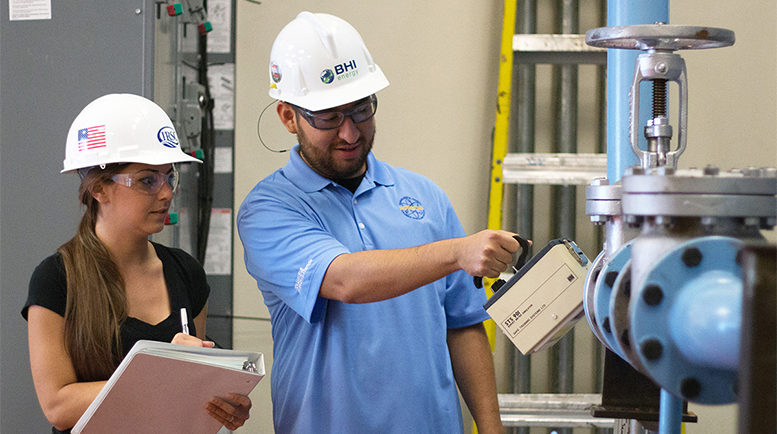When Crystal Bridgeman joined the Siemens Foundation as senior director of workforce development programs in 2014, she pored over research and led conversations about what kind of projects the foundation should invest in to have the biggest impact.
Her findings suggested there were a growing number of job opportunities in fields such as advanced manufacturing and health care that required more than a high school diploma, but less than a four-year degree.
“It became pretty clear that we wanted to focus on supporting these middle-skill STEM initiatives,” she says. Citing a 2013 report from the Brookings Institution that says these jobs averaged $53,000 per year, she adds: “Middle-skill jobs provide economic security but also are attainable.”
The efforts of Bridgeman and her colleagues at the Siemens Foundation have resulted in more than $5 million in funding commitments through 2017 that will directly impact community colleges and their students. For instance, the foundation has partnered with various organizations to fund initiatives that seek to identify and scale effective training models, eliminate the stigma often associated with middle-skill careers, and raise awareness of these job opportunities among teens and young adults.
“We’re opening pathways to more economic opportunities,” Bridgeman says.
A philanthropic ‘sweet spot’
The Siemens Foundation certainly isn’t alone in focusing its generosity on programs that reach community college campuses. In fact, community colleges are situated in somewhat of a “sweet spot” for corporate, public and private philanthropy.
Helping more students finish a degree or certificate program; targeting low-income, at-risk, or first-generation college students; expanding the number of highly skilled employees available to communities; and solving other key workforce challenges: These are all significant areas of interest for many funders today. They also happen to align with the mission and work of community colleges in particular.
As a result, community colleges have benefited from millions of dollars in foundation grants over the last few years. Consider these other examples:
The Bill & Melinda Gates Foundation works with partner organizations such as the American Association of Community Colleges (AACC), Achieving the Dream and Complete College America to transform higher education so that more students — especially low-income and first-generation students — graduate with high-quality degrees or certificates at an affordable price. The Gates Foundation provided $5.2 million to AACC to support its Pathways Project, and the foundation has given numerous grants to individual community colleges to strengthen developmental education and academic advising, among other areas.
Great Lakes Higher Education Corporation has committed more than $170 million to improve college completion in Wisconsin, Minnesota, Ohio, Iowa, Arkansas and North Dakota since 2006. Grants are open to nonprofit colleges, universities and community-based organizations. Most recently, Great Lakes committed $2.1 million to help 16 community colleges create internship programs for low-income students, with a goal of creating up to 1,000 total paid internships.
“Every single one of our grants is focused in some way on helping students complete college,” says Amy Kerwin, vice president of community investments. “We focus on at-risk students in particular, and community colleges serve a large percentage of these.”
The Duke Energy Foundation annually provides more than $30 million in grants where Duke Energy has a corporate presence: Florida, Indiana, Kentucky, North Carolina, Ohio and South Carolina. “K to Career” is one of three areas it focuses on, and STEM and workforce development are key priorities. In 2016, the foundation gave $2.6 million to North Carolina community colleges to develop programs in robotics, welding, mechatronics and other high-demand areas.
“One of the things I admire is how responsive community colleges are to the needs of their local employers,” Shawn Heath, president of the Duke Energy Foundation, says. “They’re laser-focused and can adapt quickly to local workforce needs. That’s a great model we are happy to support.”
In talking with foundation executives who support community college initiatives, some clear advice emerged that can help community college leaders succeed in their grant-seeking efforts.
For instance, community colleges will have more success if they have a distinct understanding of the challenges they face and the factors that underlie these challenges, so they can propose specific solutions to the problems. They also should be strategic in which grant opportunities they apply for, and they should network with other colleges and organizations to leverage the collective expertise of the field as much as possible.
Editor’s note: This excerpt comes from the February/March 2017 issue of the Community College Journal, the bimonthly magazine of the American Association of Community Colleges.

